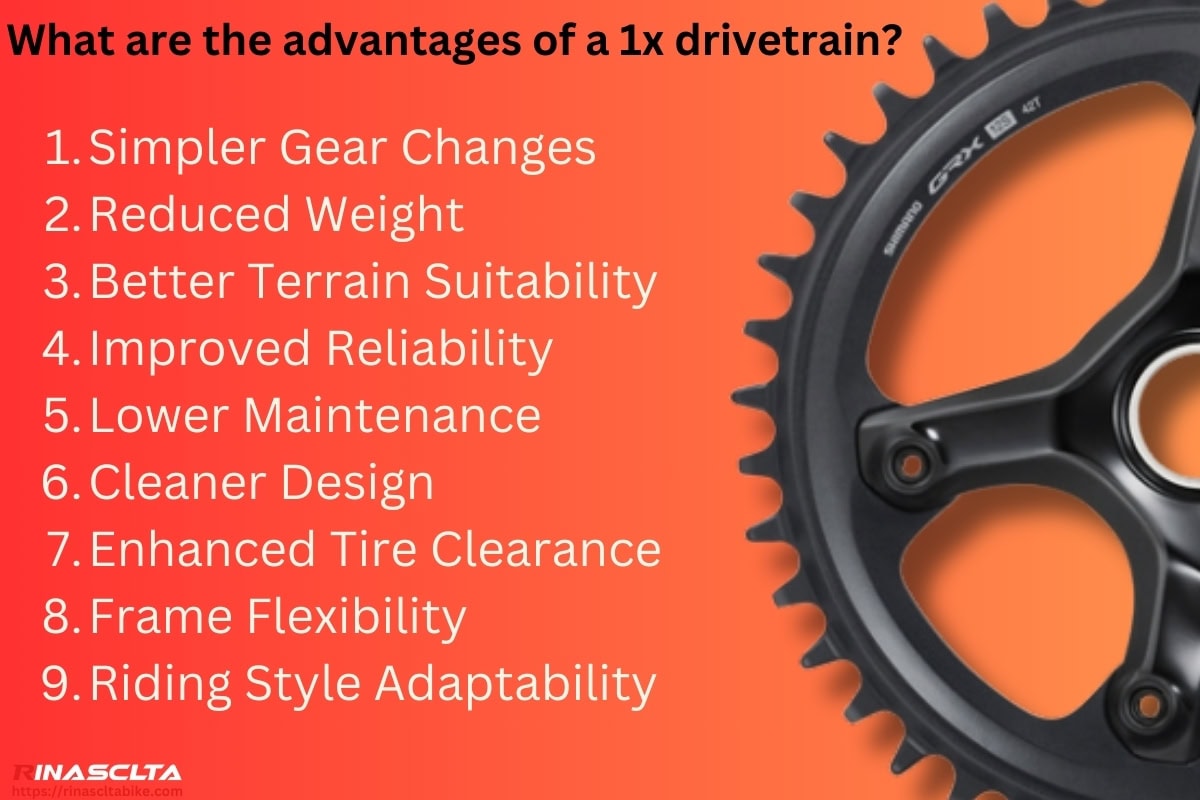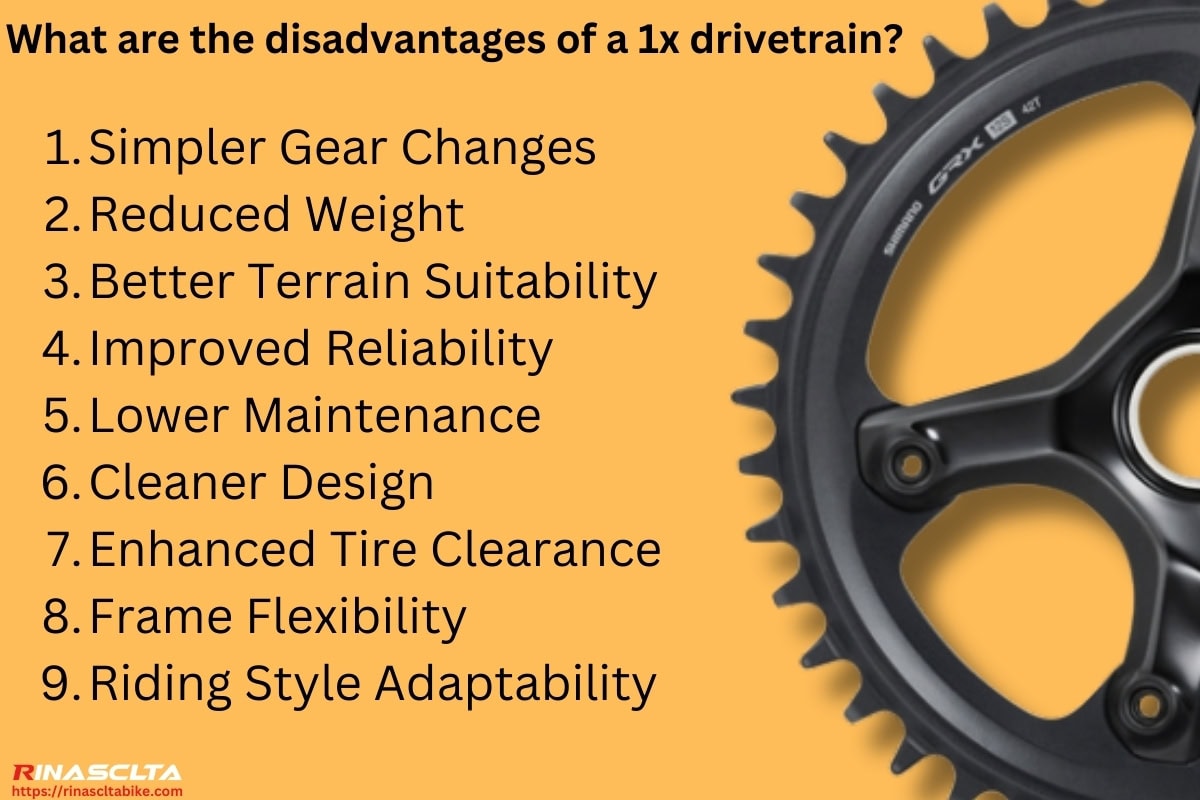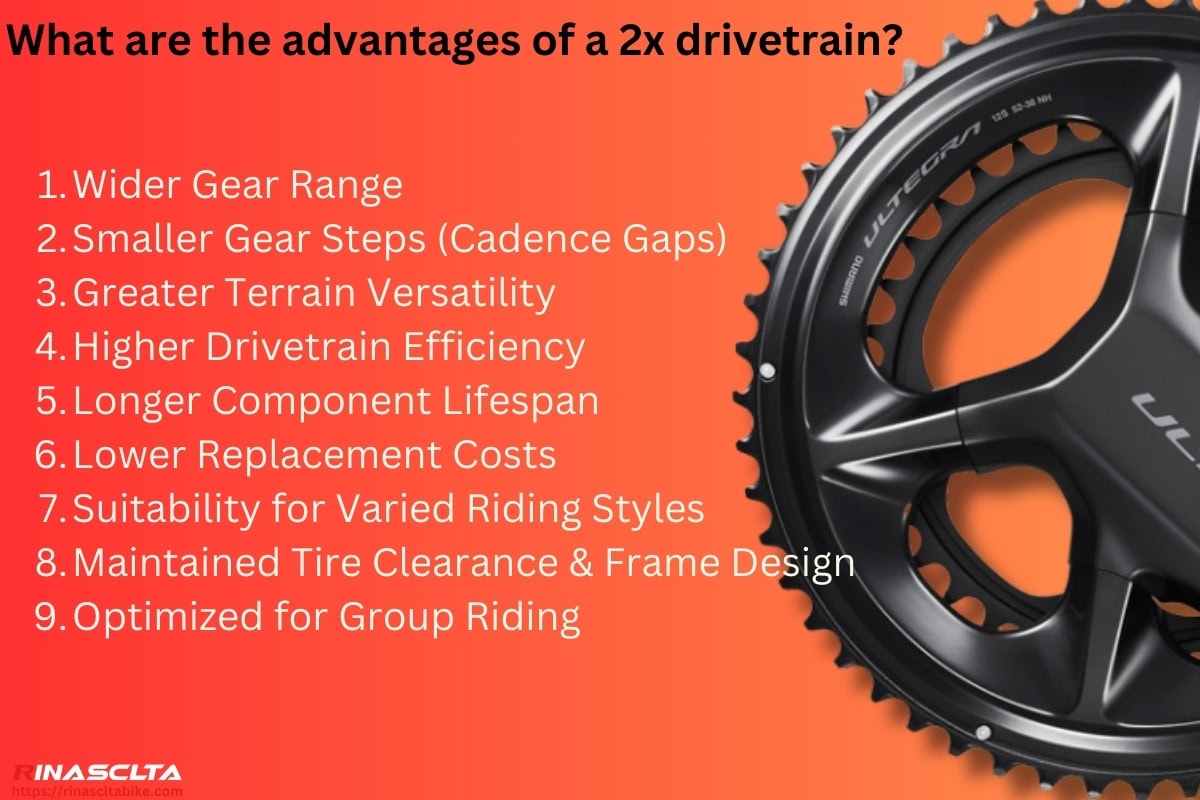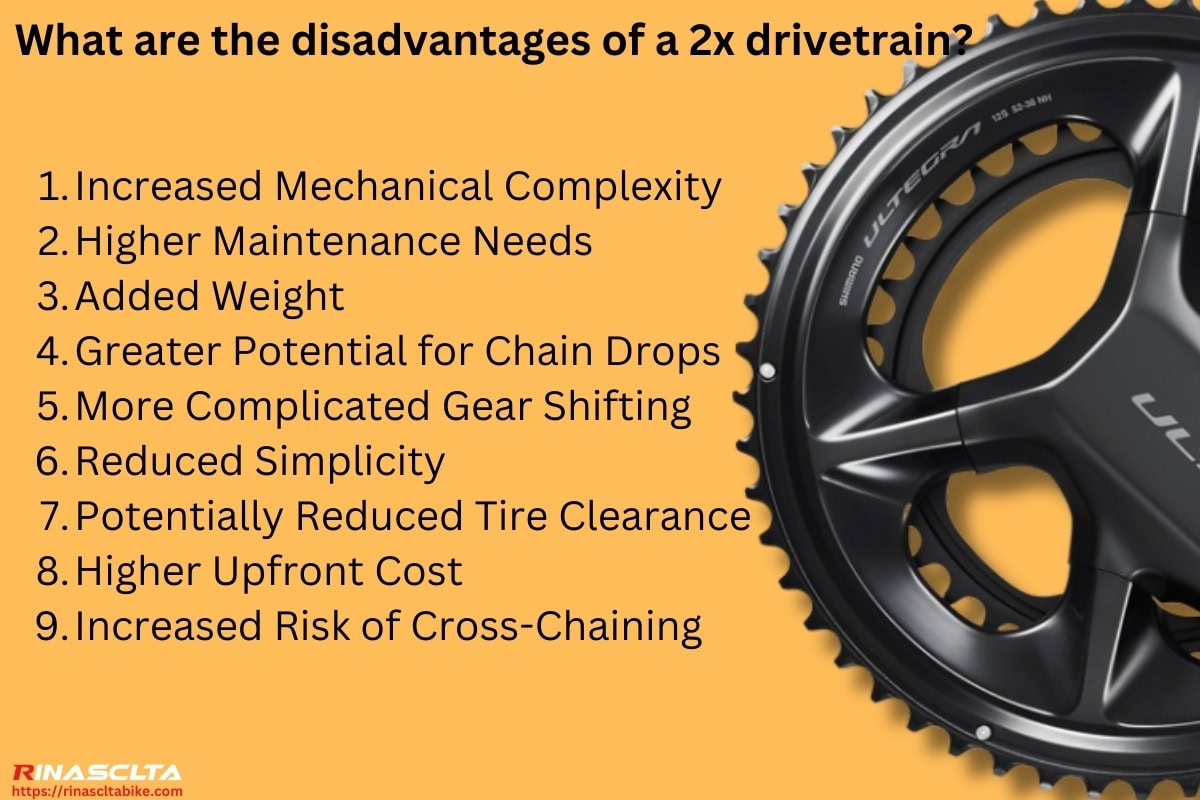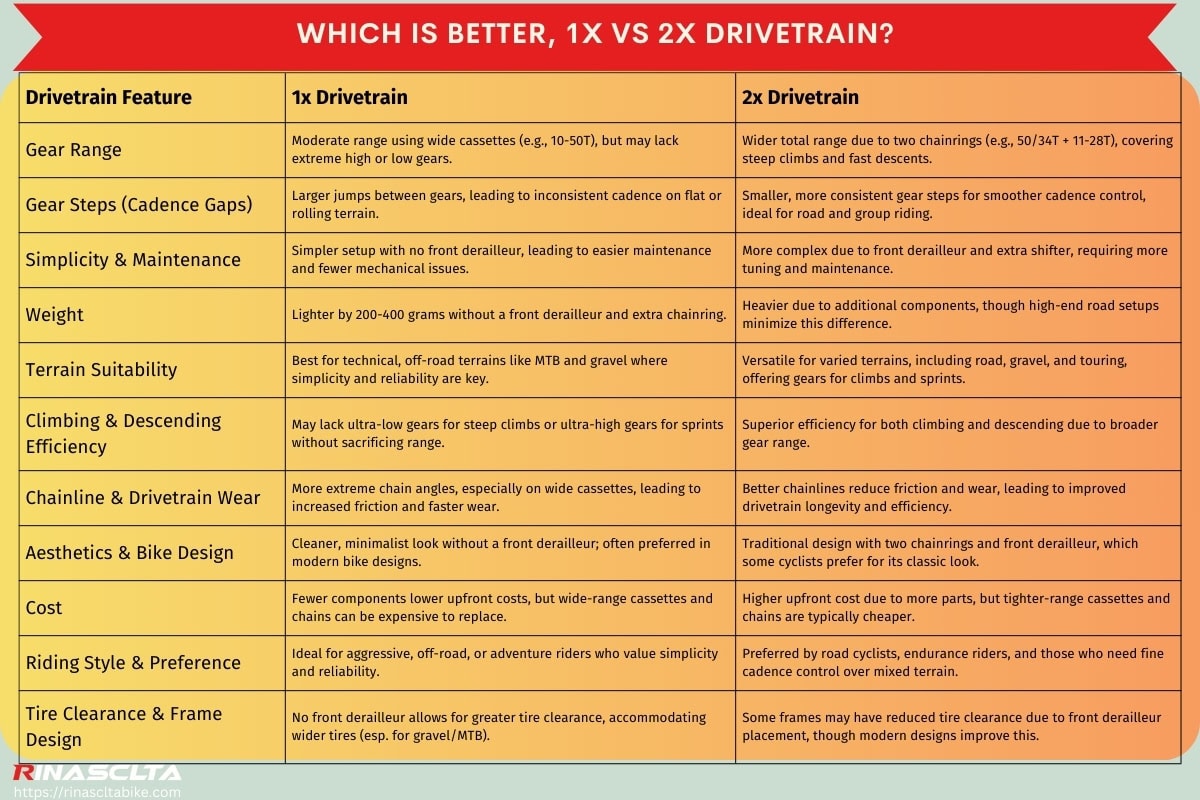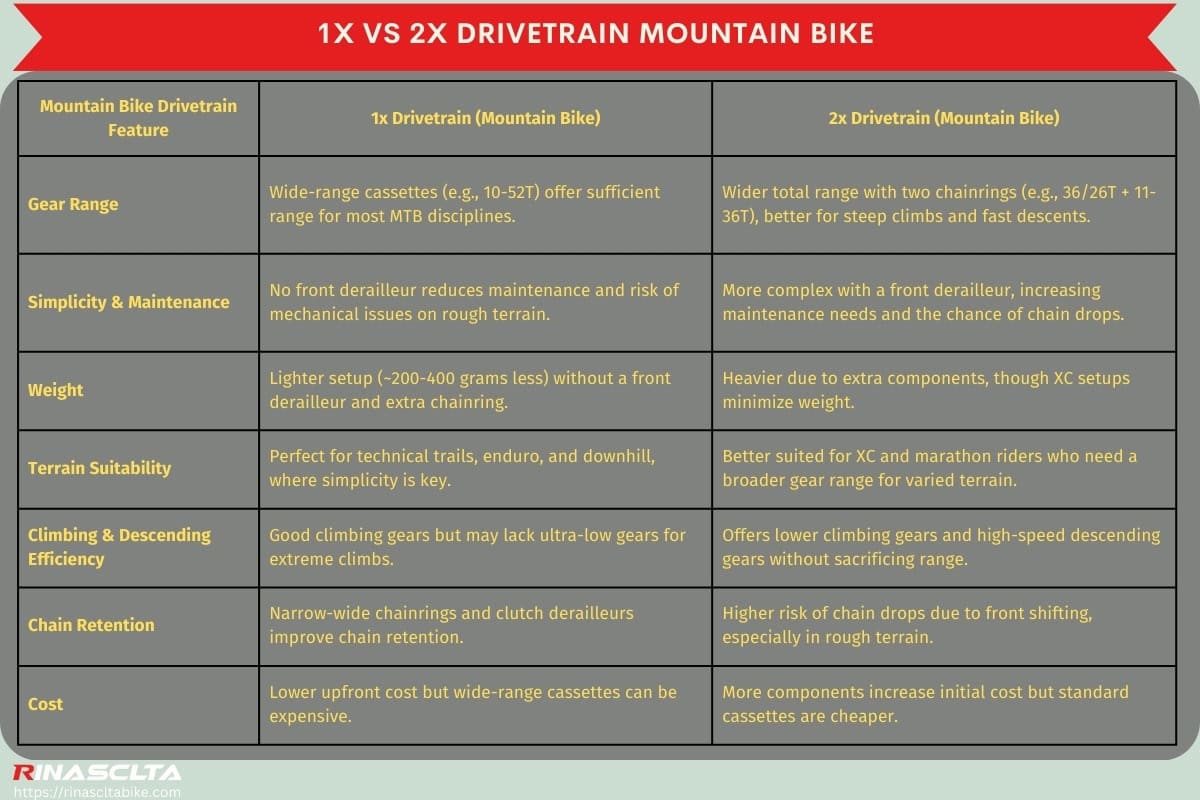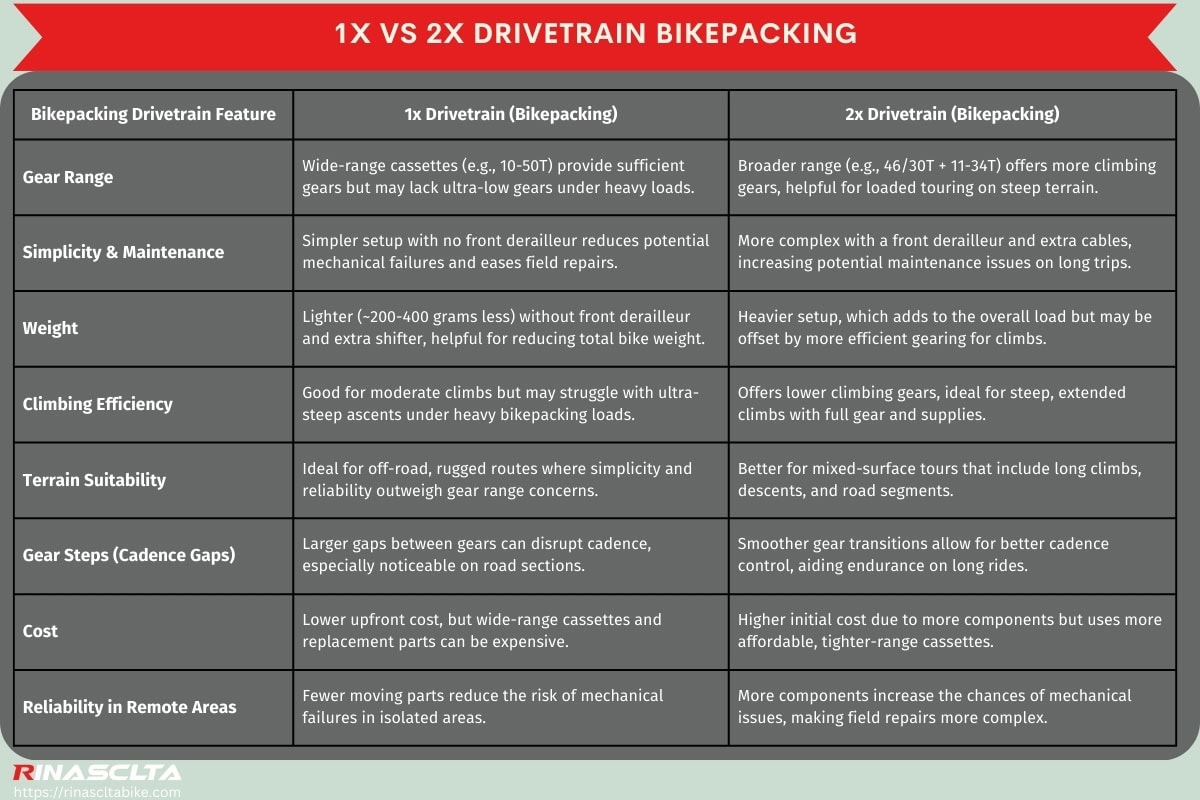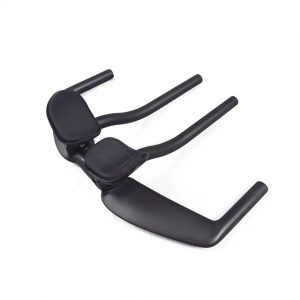The debate surrounding 1x and 2x drivetrains in the cycling world has intensified as gravel, road, and mountain biking have evolved. While 2x (double chainring) systems, the standard for decades, offer a comprehensive gear range and smoother cadence control, the advent of 1x (single chainring) drivetrains in the early 2010s, initially popularized in mountain biking, presented a simpler and lighter alternative. This alternative has since expanded to gravel and even some road bikes.
Cyclists face a dilemma in selecting between these systems, primarily due to trade-offs such as gear range, cadence gaps, terrain suitability, and maintenance complexity. Riders contemplate whether the reduced complexity and maintenance of a 1x drivetrain outweighs the smoother shifting and wider range offered by a 2x, particularly when balancing technical off-road demands with efficient road cycling performance.
1x drivetrains prioritize simplicity by eliminating the front derailleur, reducing mechanical issues and weight. However, this simplification often results in the loss of finer gear steps necessary for consistent cadence on flatter terrains. In contrast, 2x drivetrains provide a broader gear range and smoother transitions but come with increased complexity and potential for more maintenance. Consequently, cyclists must carefully consider their riding style and terrain preferences when making their decision.
This article will explore the pros and cons of 1x and 2x bike drivetrains, comparing their features, performance across different bike types, and helping you choose the right setup based on your riding style and terrain.
Table of Contents
What does 1x and 2x mean?
1x refers to a bike drivetrain setup with a single front chainring paired with a wide-range rear cassette, eliminating the front derailleur for a simpler, lighter, and more maintenance-friendly system. Originally popularized in mountain biking around the early 2010s, brands like SRAM spearheaded the 1x movement with their XX1 groupset, aiming to reduce mechanical failures in rough terrains while maintaining adequate gear range through expanded rear cassettes.
2x, on the other hand, features two front chainrings combined with a standard rear cassette, offering a broader gear range and smaller jumps between gears, which has been the traditional standard in road cycling for decades. While 2x systems provide smoother cadence control and better versatility for mixed terrains, the evolution of wide-range cassettes has allowed 1x drivetrains to overlap into gravel and even road cycling, leading to the current debate over simplicity versus gear range and performance.
What are the advantages of a 1x drivetrain?
The advantages of a 1x drivetrain include simpler gear changes, reduced weight, better terrain suitability, improved reliability, lower maintenance, cleaner design, enhanced tire clearance, frame flexibility, and adaptability to various riding styles, especially for off-road conditions.
- Simpler Gear Changes: With only one front chainring and no front derailleur, shifting becomes more intuitive, allowing riders to focus solely on the rear cassette for gear selection.
- Reduced Weight: Eliminating the front derailleur, extra shifter, and chainring cuts down on overall bike weight, which can save approximately 200-400 grams, improving climbing and handling.
- Better Terrain Suitability: 1x drivetrains excel in rough, technical terrains (like mountain biking and gravel) where frequent gear shifts and quick reactions are needed without the complexity of front shifting.
- Improved Reliability: Fewer moving parts reduce the risk of mechanical issues such as chain drops or derailleur misalignment, especially in muddy or harsh conditions.
- Lower Maintenance: Without a front derailleur and extra shifter cables, maintenance becomes simpler and less frequent, saving time and cost over the long term.
- Cleaner Design: The absence of extra chainrings and components creates a minimalist, streamlined look, often preferred for modern bike aesthetics.
- Enhanced Tire Clearance: Without a front derailleur, frames can allow for wider tires (essential for gravel and mountain bikes), improving traction and comfort on rough surfaces.
- Frame Flexibility: Bike manufacturers can design frames with shorter chainstays and better rear triangle clearance, enhancing handling and responsiveness.
- Riding Style Adaptability: 1x drivetrains cater to aggressive, off-road, and technical riders who prioritize simplicity and reliability over ultra-fine gear steps, making them popular among mountain bikers, gravel riders, and cyclocross racers.
What are the disadvantages of a 1x drivetrain?
The disadvantages of a 1x drivetrain include wider gear steps (cadence gaps), reduced gear range, increased chain angle leading to lower efficiency, faster drivetrain wear, and higher component costs, especially for wide-range cassettes.
- Wider Gear Steps (Cadence Gaps): With only one front chainring, 1x drivetrains rely on wide-range cassettes (e.g., 10-50T), leading to larger jumps between gears, which can disrupt cadence consistency, particularly on flat or rolling terrain.
- Reduced Gear Range: While modern 1x cassettes offer broad coverage, they often can’t match the total gear range of a 2x system, potentially limiting low-end climbing gears or high-end sprint gears.
- Increased Chain Angle and Lower Efficiency: Extreme cross-chaining in wide-range cassettes causes more severe chain angles, reducing drivetrain efficiency (up to 2-3% power loss) and increasing friction, especially in the smallest and largest cogs.
- Faster Drivetrain Wear: The higher chain tension and frequent use of extreme gears can accelerate wear on the chain, cassette, and chainring, leading to more frequent replacements.
- Higher Component Costs: Wide-range cassettes and compatible derailleurs (like SRAM Eagle) are often more expensive than standard cassettes, and their increased wear means higher long-term maintenance costs.
- Limited High or Low-End Gearing: Riders may struggle to find an ideal setup that balances both low-climbing gears and high-speed options, often having to compromise on one end.
- Potential for Chain Drops: Despite clutch derailleurs and narrow-wide chainrings, 1x systems can still experience chain drops under rough conditions, especially if not properly maintained.
What bikes are using 1x drivetrain?
Bikes that use 1x drivetrains are primarily mountain bikes (MTB), gravel bikes, cyclocross bikes, and increasingly some road bikes, as well as commuter and bikepacking setups, due to the drivetrain’s simplicity, reliability, and ability to handle varied and technical terrains without the complexity of front shifting.
Why is 1x so popular these days?
1x is so popular these days because it offers simplicity, reliability, and lower maintenance, making it ideal for a wide range of riding styles, especially off-road disciplines like mountain biking and gravel riding. By eliminating the front derailleur, 1x drivetrains reduce mechanical complexity and the risk of chain drops, while wide-range cassettes (like 10-50T or 10-52T) provide enough gearing to handle steep climbs and fast descents. Riders also appreciate the cleaner bike design, lighter weight (saving around 200-400 grams) and the ability to focus solely on rear shifting, which simplifies gear changes in technical terrain. The growing popularity of gravel biking and adventure cycling, where reliability and ease of use are crucial, has further driven the widespread adoption of 1x drivetrains.
What are the advantages of a 2x drivetrain?
The advantages of a 2x drivetrain include a wider gear range, smaller gear steps (better cadence control), greater terrain versatility, higher drivetrain efficiency, longer component lifespan, lower replacement costs, and suitability for diverse riding styles without compromising tire clearance or frame design.
- Wider Gear Range: With two front chainrings (e.g., 50/34T or 46/30T), 2x drivetrains provide a broader overall gear range, allowing for both low climbing gears and high-speed options, ideal for mixed terrain and long-distance rides.
- Smaller Gear Steps (Cadence Gaps): The combination of two chainrings and a tighter-range cassette (e.g., 11-28T or 11-34T) offers smoother and more consistent cadence control, reducing large jumps between gears and improving efficiency on flat or rolling terrains.
- Greater Terrain Versatility: 2x drivetrains excel across varied terrains, from steep mountain climbs to high-speed road descents, making them ideal for road, gravel, and touring bikes where adaptability is key.
- Higher Drivetrain Efficiency: With better chainlines and reduced cross-chaining compared to wide-range 1x systems, 2x drivetrains minimize friction, improving pedaling efficiency and power transfer by up to 2-3%.
- Longer Component Lifespan: Because the load is distributed across two front chainrings and the cassette uses less extreme gearing, 2x drivetrains often experience less wear, leading to longer-lasting chains, cassettes, and chainrings.
- Lower Replacement Costs: Tighter-range cassettes used in 2x systems are typically less expensive than wide-range 1x cassettes, reducing long-term maintenance costs.
- Suitability for Varied Riding Styles: 2x drivetrains cater to road cyclists, gravel riders, and endurance riders who prioritize smooth cadence control and efficiency over mechanical simplicity.
- Maintained Tire Clearance & Frame Design: Modern 2x setups are designed to offer generous tire clearance, especially on gravel bikes, without compromising frame geometry or functionality.
- Optimized for Group Riding: With finer gear steps and broader range, 2x drivetrains make it easier to maintain steady speeds in fast-paced group rides, particularly on the road.
What are the disadvantages of a 2x drivetrain?
The disadvantages of a 2x drivetrain include increased mechanical complexity, higher maintenance needs, added weight, greater potential for chain drops, more complicated gear shifting, and in some cases, reduced tire clearance.
- Increased Mechanical Complexity: A 2x drivetrain requires a front derailleur, an additional shifter, and extra cabling, which introduces more components that can malfunction or require tuning.
- Higher Maintenance Needs: The front derailleur and additional shifting cables need regular adjustment to prevent misalignment and ensure smooth shifting, increasing maintenance time and effort.
- Added Weight: The extra chainring, front derailleur, and shifter add about 200-400 grams compared to a 1x system, which can impact climbing efficiency and overall bike weight.
- Greater Potential for Chain Drops: The use of a front derailleur increases the risk of chain drops, especially on rough or technical terrain, unless chain retention devices are used.
- More Complicated Gear Shifting: Managing both front and rear shifting can be less intuitive, particularly for beginner riders, leading to inefficient gear combinations or cross-chaining.
- Reduced Simplicity: The dual-chainring setup can complicate decision-making during rides, as cyclists must coordinate shifts between the front and rear to optimize cadence and avoid redundant gear ratios.
- Potentially Reduced Tire Clearance: On some frames, especially gravel or adventure bikes, the presence of a front derailleur can limit tire width options, affecting off-road capability.
- Higher Upfront Cost: Although individual 2x components (like cassettes) may be cheaper, the need for more parts (e.g., front derailleur, extra shifter) can make complete groupsets more expensive.
- Increased Risk of Cross-Chaining: Riders may unintentionally use extreme gear combinations (e.g., big chainring + big cog), leading to inefficient chainlines, increased drivetrain wear, and reduced power transfer.
What bikes are using 2x drivetrain?
Bikes that use 2x drivetrains are primarily road bikes, gravel bikes, touring bikes, and some cyclocross bikes, as they benefit from the wider gear range, finer gear steps, and efficient cadence control that 2x systems provide, making them ideal for varied terrains, long-distance rides, and maintaining consistent speeds on flat or rolling surfaces.
Why do bikes traditionally use a 2x design?
2x drivetrains have been traditionally used because they offer a wider gear range and smaller gear steps, allowing cyclists to maintain an efficient and consistent cadence across diverse terrains. With two front chainrings (e.g., 50/34T or 46/30T) combined with a closely spaced rear cassette (like 11-28T), 2x systems provide both high-end gears for speed on descents and flats, and low-end gears for steep climbs without large jumps between gears. This design ensures smoother gear transitions, improved cadence control, and better power efficiency, which is essential for road cycling, gravel riding, and touring, where maintaining a steady pace over long distances is crucial. Additionally, the 2x setup was historically easier to implement before the advent of wide-range cassettes, making it the standard for decades across most bike types.
Which is better, 1x vs 2x drivetrain?
Choosing between a 1x and 2x drivetrain depends on your riding style, terrain preferences, and priorities regarding simplicity, gear range, and maintenance—each system offers unique advantages tailored to specific cycling needs.
Let’s compare 1x and 2x drivetrains based on key features as below.
| Drivetrain Feature | 1x Drivetrain | 2x Drivetrain |
| Gear Range | Moderate range using wide cassettes (e.g., 10-50T), but may lack extreme high or low gears. | Wider total range due to two chainrings (e.g., 50/34T + 11-28T), covering steep climbs and fast descents. |
| Gear Steps (Cadence Gaps) | Larger jumps between gears, leading to inconsistent cadence on flat or rolling terrain. | Smaller, more consistent gear steps for smoother cadence control, ideal for road and group riding. |
| Simplicity & Maintenance | Simpler setup with no front derailleur, leading to easier maintenance and fewer mechanical issues. | More complex due to front derailleur and extra shifter, requiring more tuning and maintenance. |
| Weight | Lighter by 200-400 grams without a front derailleur and extra chainring. | Heavier due to additional components, though high-end road setups minimize this difference. |
| Terrain Suitability | Best for technical, off-road terrains like MTB and gravel where simplicity and reliability are key. | Versatile for varied terrains, including road, gravel, and touring, offering gears for climbs and sprints. |
| Climbing & Descending Efficiency | May lack ultra-low gears for steep climbs or ultra-high gears for sprints without sacrificing range. | Superior efficiency for both climbing and descending due to broader gear range. |
| Chainline & Drivetrain Wear | More extreme chain angles, especially on wide cassettes, leading to increased friction and faster wear. | Better chainlines reduce friction and wear, leading to improved drivetrain longevity and efficiency. |
| Aesthetics & Bike Design | Cleaner, minimalist look without a front derailleur; often preferred in modern bike designs. | Traditional design with two chainrings and front derailleur, which some cyclists prefer for its classic look. |
| Cost | Fewer components lower upfront costs, but wide-range cassettes and chains can be expensive to replace. | Higher upfront cost due to more parts, but tighter-range cassettes and chains are typically cheaper. |
| Riding Style & Preference | Ideal for aggressive, off-road, or adventure riders who value simplicity and reliability. | Preferred by road cyclists, endurance riders, and those who need fine cadence control over mixed terrain. |
| Tire Clearance & Frame Design | No front derailleur allows for greater tire clearance, accommodating wider tires (esp. for gravel/MTB). | Some frames may have reduced tire clearance due to front derailleur placement, though modern designs improve this. |
1x vs 2x drivetrain road bike
1x drivetrains are compared to 2x on road bikes because they offer simplicity, lower weight, and easier maintenance, while 2x systems provide a wider gear range and smoother cadence control, which are crucial for maintaining speed and efficiency during long road rides, fast group rides, and varied terrain. Road cyclists often debate between the minimalism and reliability of 1x setups versus the versatility and performance advantages of 2x drivetrains, especially in terms of gear range, cadence gaps, and climbing efficiency.
| Road Bike Drivetrain Feature | 1x Drivetrain (Road Bike) | 2x Drivetrain (Road Bike) |
| Gear Range | More limited range, often using 11-42T or 10-44T cassettes, which may lack either very high or low gears. | Broader range with combinations like 50/34T and 11-28T, providing gears for steep climbs and fast descents. |
| Gear Steps (Cadence Gaps) | Larger gaps between gears can make it harder to maintain smooth cadence, especially in group rides. | Smaller, more consistent gear steps allow for better cadence control, ideal for road racing and group rides. |
| Climbing Efficiency | May require more effort on steep climbs due to fewer low-end gear options. | Offers better climbing gears with lower ratios, making long climbs more manageable. |
| Descending & Sprinting | Limited high-end gears can restrict maximum speeds on descents or during sprints. | Wide high-end gearing allows for faster speeds on descents and high-power sprints. |
| Simplicity & Maintenance | Simpler setup with no front derailleur, reducing maintenance and potential mechanical issues. | More complex due to front derailleur and extra shifter, requiring regular tuning and maintenance. |
| Weight | Lighter setup, saving around 200-300 grams, beneficial for climbing and acceleration. | Heavier due to extra chainring, front derailleur, and shifter, though high-end groupsets minimize weight. |
| Aesthetics & Bike Design | Clean, minimalist look without the front derailleur, preferred by some modern bike designs. | Traditional road bike appearance with two chainrings and front derailleur. |
| Cost | Lower upfront costs with fewer components, though wide-range cassettes can be expensive. | Higher upfront costs due to more components, but standard cassettes and chains are cheaper. |
| Riding Style & Preference | Ideal for solo rides, adventure road cycling, and riders seeking simplicity and reduced maintenance. | Best for group rides, road racing, and endurance cyclists who need fine cadence control and full gear range. |
Should you run a 1x set-up on your road bike?
You should run a 1x setup on your road bike if you prioritize simplicity, lower weight, and reduced maintenance, especially for solo rides, flat terrain, or adventure road cycling where gear range and cadence precision are less critical. But, if you often ride in fast group rides, tackle steep climbs, or value smooth cadence control with a wider gear range, a 2x setup would be the better choice to ensure you have the right gear for varied terrains and higher speeds.
1x vs 2x drivetrain mountain bike
1x drivetrains dominate mountain biking due to their simplicity, lighter weight, and improved reliability on rough terrains, where technical features require quick gear changes without front-shifting complexity. However, 2x drivetrains still appeal to some XC and trail riders who seek a wider gear range and lower climbing gears without sacrificing high-speed options on descents.
| Mountain Bike Drivetrain Feature | 1x Drivetrain (Mountain Bike) | 2x Drivetrain (Mountain Bike) |
| Gear Range | Wide-range cassettes (e.g., 10-52T) offer sufficient range for most MTB disciplines. | Wider total range with two chainrings (e.g., 36/26T + 11-36T), better for steep climbs and fast descents. |
| Simplicity & Maintenance | No front derailleur reduces maintenance and risk of mechanical issues on rough terrain. | More complex with a front derailleur, increasing maintenance needs and the chance of chain drops. |
| Weight | Lighter setup (~200-400 grams less) without a front derailleur and extra chainring. | Heavier due to extra components, though XC setups minimize weight. |
| Terrain Suitability | Perfect for technical trails, enduro, and downhill, where simplicity is key. | Better suited for XC and marathon riders who need a broader gear range for varied terrain. |
| Climbing & Descending Efficiency | Good climbing gears but may lack ultra-low gears for extreme climbs. | Offers lower climbing gears and high-speed descending gears without sacrificing range. |
| Chain Retention | Narrow-wide chainrings and clutch derailleurs improve chain retention. | Higher risk of chain drops due to front shifting, especially in rough terrain. |
| Cost | Lower upfront cost but wide-range cassettes can be expensive. | More components increase initial cost but standard cassettes are cheaper. |
1x vs 2x drivetrain gravel bike
1x drivetrains are popular in gravel biking for their simplicity, reliability, and ability to handle rough, mixed terrains without front shifting, but 2x drivetrains offer finer cadence control and a wider gear range, making them ideal for long-distance gravel rides that include road segments and steep climbs.
| Gravel Bike Drivetrain Feature | 1x Drivetrain (Gravel Bike) | 2x Drivetrain (Gravel Bike) |
| Gear Range | Wide-range cassettes (e.g., 11-42T or 10-44T) provide enough range for mixed terrain. | Broader range with two chainrings (e.g., 46/30T + 11-34T), ideal for long climbs and flat sections. |
| Gear Steps (Cadence Gaps) | Larger gaps between gears can disrupt cadence on flat or road sections. | Smoother, smaller gear steps allow for consistent cadence on rolling or paved terrain. |
| Simplicity & Maintenance | Simpler setup with no front derailleur, reducing maintenance and mechanical risks. | More complex with extra components, requiring more frequent tuning. |
| Weight | Lighter setup (~200-300 grams less) without the front derailleur and extra shifter. | Heavier due to the additional front chainring and derailleur. |
| Terrain Suitability | Ideal for technical gravel, off-road, and adventure cycling where simplicity is key. | Better for mixed-terrain rides involving long climbs, flats, and paved roads. |
| Climbing & Descending Efficiency | Wide-range cassettes handle moderate climbs but may lack ultra-low gears. | Offers lower climbing gears and high-speed gears for road descents. |
| Cost | Lower upfront costs, but wide-range cassettes and derailleurs can be pricey. | Higher upfront costs due to more components but cheaper cassette replacements. |
Should you choose 1x or 2x for your next gravel bike?
You should run a 1x drivetrain on your next gravel bike if you prioritize simplicity, lower maintenance, and better reliability on rough, technical, or mixed terrains, especially for bikepacking, adventure rides, or races with unpredictable conditions. But, if you often ride on varied terrain that includes long road sections, steep climbs, and require smoother cadence control with a wider gear range, a 2x drivetrain would be the better choice, offering more versatility and efficiency for longer, mixed-surface rides.
1x vs 2x drivetrain bikepacking
1x and 2x drivetrains are compared in bikepacking due to the need for a balance between simplicity, reliability, and gear range. While 1x offers lower maintenance and fewer mechanical risks—critical for long, remote trips—2x provides a wider gear range and smaller cadence gaps, which can be advantageous when carrying heavy loads over varied terrain, including steep climbs and fast descents.
| Bikepacking Drivetrain Feature | 1x Drivetrain (Bikepacking) | 2x Drivetrain (Bikepacking) |
| Gear Range | Wide-range cassettes (e.g., 10-50T) provide sufficient gears but may lack ultra-low gears under heavy loads. | Broader range (e.g., 46/30T + 11-34T) offers more climbing gears, helpful for loaded touring on steep terrain. |
| Simplicity & Maintenance | Simpler setup with no front derailleur reduces potential mechanical failures and eases field repairs. | More complex with a front derailleur and extra cables, increasing potential maintenance issues on long trips. |
| Weight | Lighter (~200-400 grams less) without front derailleur and extra shifter, helpful for reducing total bike weight. | Heavier setup, which adds to the overall load but may be offset by more efficient gearing for climbs. |
| Climbing Efficiency | Good for moderate climbs but may struggle with ultra-steep ascents under heavy bikepacking loads. | Offers lower climbing gears, ideal for steep, extended climbs with full gear and supplies. |
| Terrain Suitability | Ideal for off-road, rugged routes where simplicity and reliability outweigh gear range concerns. | Better for mixed-surface tours that include long climbs, descents, and road segments. |
| Gear Steps (Cadence Gaps) | Larger gaps between gears can disrupt cadence, especially noticeable on road sections. | Smoother gear transitions allow for better cadence control, aiding endurance on long rides. |
| Cost | Lower upfront cost, but wide-range cassettes and replacement parts can be expensive. | Higher initial cost due to more components but uses more affordable, tighter-range cassettes. |
| Reliability in Remote Areas | Fewer moving parts reduce the risk of mechanical failures in isolated areas. | More components increase the chances of mechanical issues, making field repairs more complex. |
What is the future of bike drivetrain?
The future of bike drivetrains is moving towards increased automation, wireless technology, and simplified user interfaces, with innovations like Shimano’s Synchro Shift, which automatically manages front and rear shifts for optimal gear combinations, and SRAM’s AXS wireless shifting, offering fully electronic, cable-free drivetrains with customizable shifting patterns. These advancements reflect a trend towards cleaner bike designs, reduced maintenance, and enhanced rider experience, where technology handles gear optimization, allowing cyclists to focus more on performance and less on manual gear management.
Can I convert a bike to 1x?
Yes, you can convert a bike to a 1x drivetrain if your frame and components are compatible, especially if the rear derailleur can handle a wide-range cassette and the chainline aligns properly. But, you may need to replace or upgrade bike parts like the rear derailleur, cassette, and install a narrow-wide chainring for proper chain retention, and in some cases, adjust or replace the bottom bracket or crankset to ensure smooth performance without front shifting.
